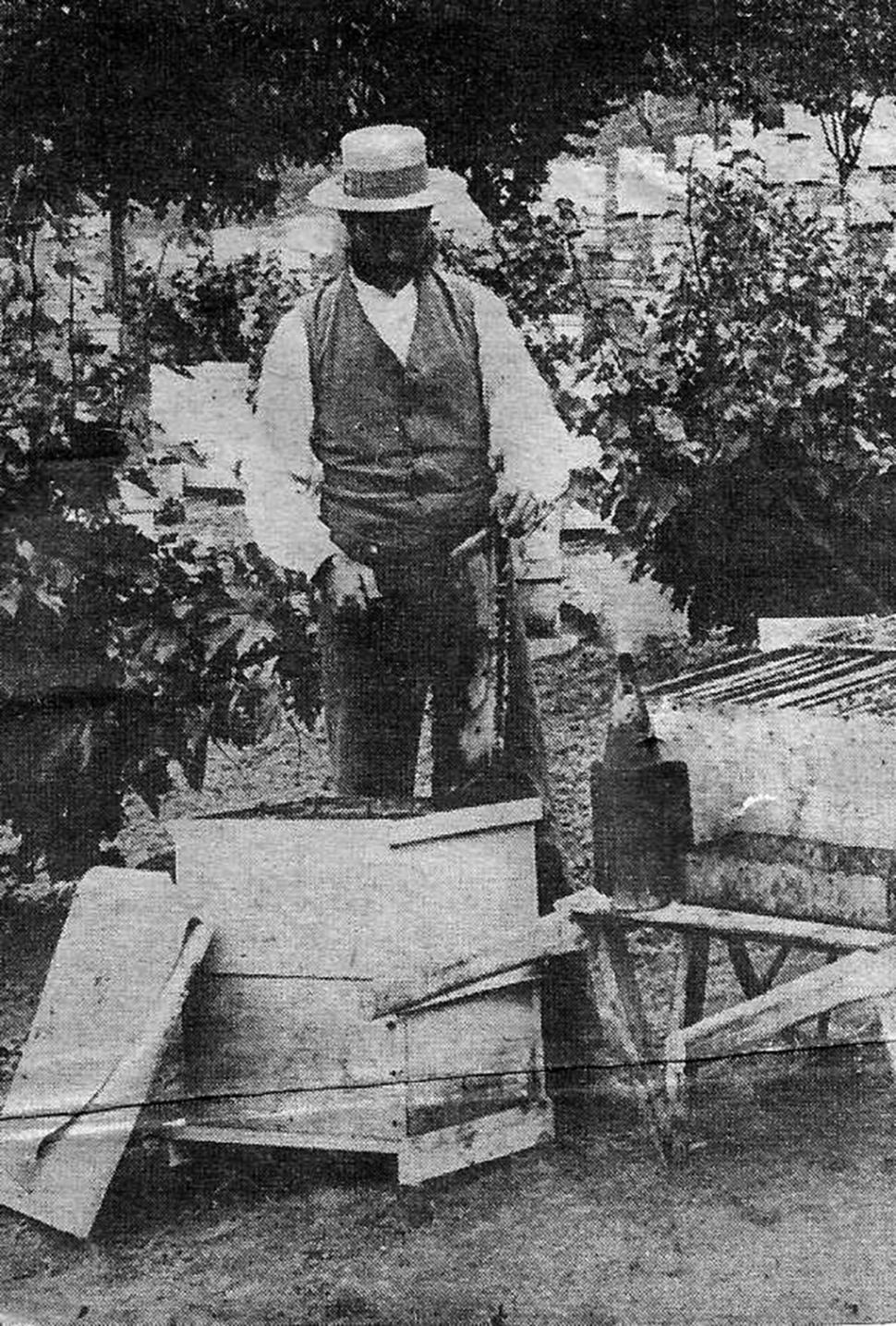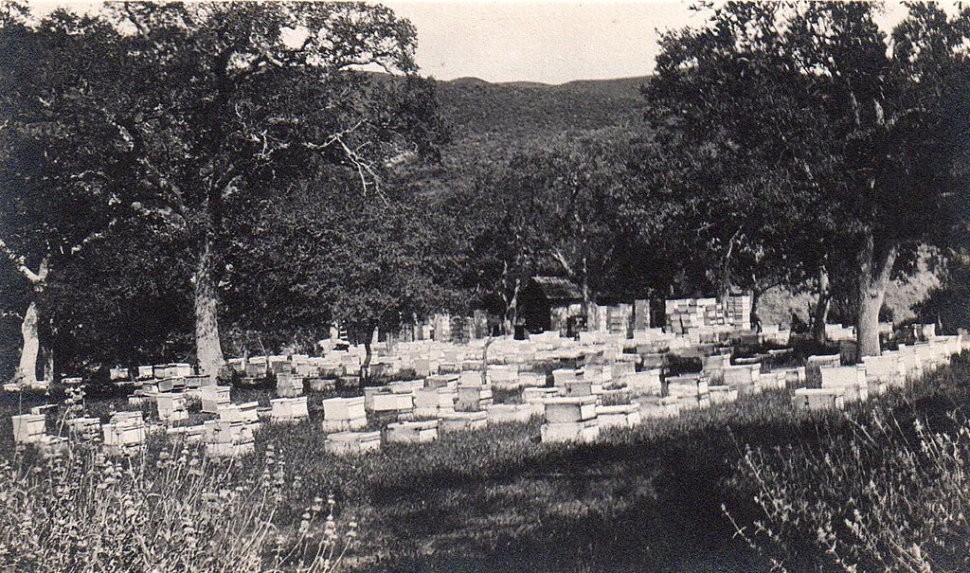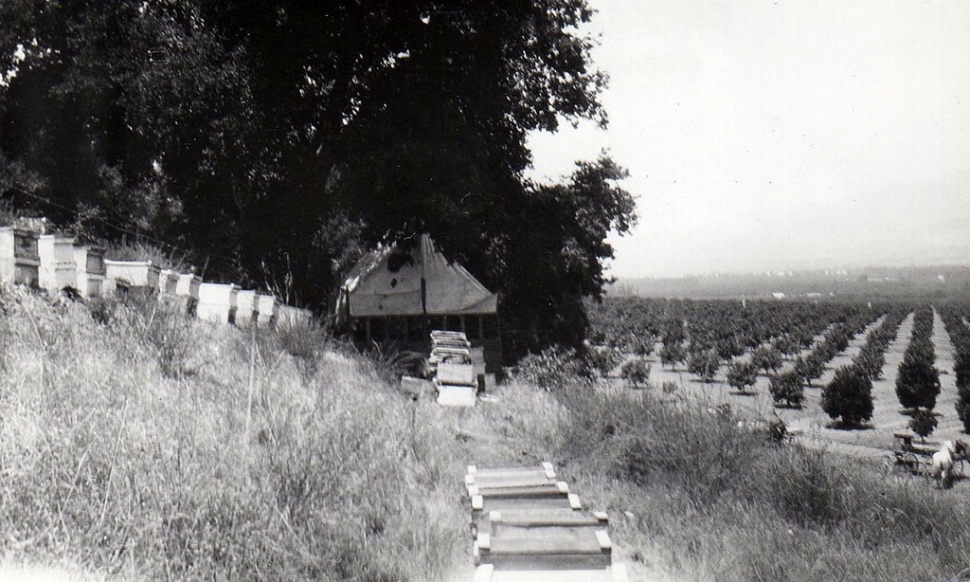|
A Honey of a Job
 James F. Mclntyre in the 1900’s smoking his bee hives. Photos courtesy Fillmore Historical Museum. By Anonymous — Wednesday, December 16th, 2020
 Young family bees on Oak Flat in 1916.  Beehives in Bardsdale. Courtesy Fillmore Historical Museum Honey bees were introduced into North America in 1622 in Jamestown and from there slowly spread across the continent. By 1850, bee colonies were appearing in the San Jose area and soon came south. By 1876, Robert Wilkin moved his apiary from Ohio to Sespe. Even without the orchards that would soon come to the area, the abundant native vegetation, especially sage, wild alfalfa and buckwheat, provided for the bees. This particular apiary was taken over by Mr. Wilkin’s son-in-law, James F. McIntyreshown here in 1900, smoking a hive to sedate the bees so the frames of honey comb could be safely removed. The process at the McIntyre apiary was explained in the October 10, 1891 issue of Pacific Rural Press (San Francisco). “The land slopes about ten feet from the back of the apiary to the honey house, which makes it easy to wheel the honey into the house. Two carts… are used to wheel in the honey. Each cart carries four "supers” full, or about 200 pounds at a load. When extracting, one man fills one cart with honey in the apiary, while the other extracts the other cart-load in the honey house. It takes from 20 to 30 minutes to fill a cart, and the man in the honey house can easily extract one in the same time. A three-inch pipe runs from a reservoir down through the apiary and connects with a Pelton water motor in the honey house, which furnishes sufficient power to run a small circular saw or the honey extractor. The honey runs from the extractor into iron tank, shown below the honey house, which hold 8000 pounds each, where It is allowed to stand for one or two weeks, and is then drawn off through a molasses gate into 60-pound cans for the market.” The entire McIntyre family was committed to beekeeping. They had 4 daughters and one son. The son was named Robert, the girls were all named after plants – Myrtle, Flora, Lily and Pansy. According to the San Francisco Call, October 31, 1906, Flora was paying her way through UC Berkeley by raising and selling queen bees at $1 each. “Her skill in handling the insects is such as to qualify her for rank with the entomologists of the university.” The McIntyres in Sespe were not the only apiarists in the area. Tommy Arundell became well known with his hives in Pole Creek. In 1893, he delivered a paper to the California Beekeepers Association on “Economy in Bee Keeping”. Nate and Al Stone, who are remembered as some of the hunters who supplied Fillmore with fresh meat, also conducted a thriving honey business in the 1910s and 20s. The Haase family had extensive honey operations at Oak Flat as did the Young family. Piru Canyon is still a major honey producing area. By 1910, Ventura County had over 11,000 hives of bees and produced over 400,000 pounds of honey, the majority of which was produced in the Fillmore area. |
